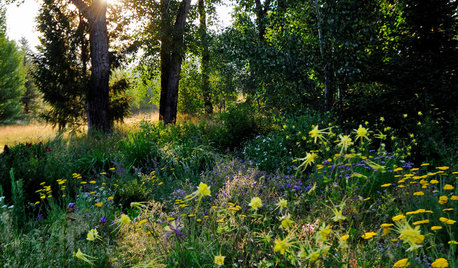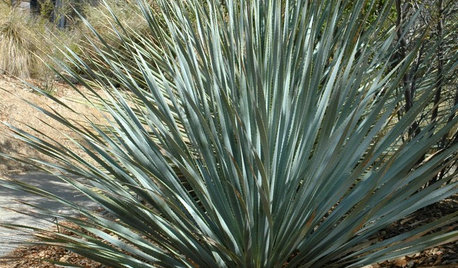Rhizome barrier, what is best?
pyratejim
17 years ago
Related Stories

GARDENING AND LANDSCAPINGGrow a Lush Privacy Screen
No need to wait forever for patio privacy the green way. These 10 ideas will get your screening up and running in no time
Full Story
GARDENING GUIDESGreat Design Plant: Bugle Weed, a Quick Ground Cover
It’s highly adaptable, suppresses weeds, reduces erosion and provide weeks of bright flowers. Just watch for invasiveness
Full Story
LANDSCAPE DESIGNSmall Garden? You Can Still Do Bamboo
Forget luck. Having bamboo that thrives on a wee plot just takes planning, picking the right variety, and keeping runners in check
Full Story
NATIVE PLANTSWhy Aggressive Plants Might Actually Be Your Friends
Sometimes a garden thug is exactly what’s called for
Full Story
LANDSCAPE DESIGNThe 7 Best Plant Types for Creating Privacy and How to Use Them
Follow these tips for using different kinds of plants as living privacy screens
Full Story
GARDENING GUIDESGreat Design Plant: Alphonse Karr Bamboo
Bamboo gets a bad rap in the garden, but this clumping variety creates an exotic landscape look with less aggressiveness
Full Story
LANDSCAPE DESIGNBeautiful Noise: How to Create a Symphony in Your Garden
Take your surroundings to another level by introducing the element of sound with ground covers, water features and wind catchers
Full Story
MOST POPULARMeet a Lawn Alternative That Works Wonders
Carex can replace turfgrass in any spot, is low maintenance and adjusts easily. Add its good looks and you’ve got a ground cover winner
Full Story
GARDENING GUIDESGreat Design Plant: Dasylirion Wheeleri
The gray-toothed leaves of common sotol add great spiky texture to drought-tolerant landscapes
Full Story
GARDENING AND LANDSCAPINGBeachfront Garden Stands Up to the Elements
A sophisticated outdoor entertaining space relies on tough plants and resilient materials to bring indoor living outside
Full StorySponsored
Leading Interior Designers in Columbus, Ohio & Ponte Vedra, Florida






pyratejimOriginal Author
dcballard
Related Professionals
East Patchogue Landscape Architects & Landscape Designers · Arlington Landscape Contractors · Edmond Landscape Contractors · Wilmington Landscape Contractors · East Chicago Landscape Contractors · Gainesville Landscape Contractors · Galt Landscape Contractors · Galveston Landscape Contractors · Palm Beach Gardens Landscape Contractors · Plainfield Carpenters · Greensburg General Contractors · Harvey General Contractors · Saint Andrews General Contractors · Spencer General Contractors · View Park-Windsor Hills General ContractorspyratejimOriginal Author
suprdude
pyratejimOriginal Author
dcballard
pyratejimOriginal Author
dcballard